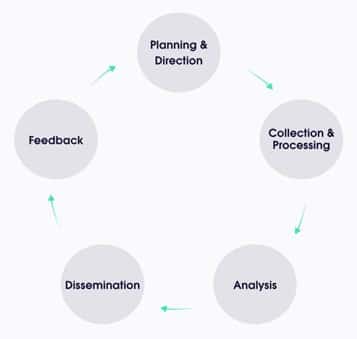Why data security is no longer optional

Security breaches cost more than just money. Investing in data security today prevents long-term negative consequences that cost your business time, money, and reputation. Acquiring threat intelligence data is a primary step in preventing cyberattacks, and web scraping is the method of choice for many modern data-driven businesses.
Business and personal activities are increasingly being digitized. Whether you are simply taking your temperature with a connected thermometer or sending products across complex supply chains, enterprises continuously collect data to improve services and refine operational processes.
Businesses are always looking for more ways to obtain quality data -- whether it is from their own operations, gathered from the internet, or purchased from a third party. In turn, skyrocketing demand has piqued the interest of some less-than-benevolent entities.
Cyberattack risks are growing
Cyberattacks are growing in frequency, severity, and sophistication as the demand for data grows. Several factors leading to data breaches include engaging third-party services, network operation risks, extensive cloud migration, increased system complexity, and compliance failures.
Data breaches can devastate a company financially while irrevocably harming its reputation. According to an IBM report, the average cost of a data breach is $150 per record. With an average size of 25,575 records lost per incident, a cyberattack can potentially cost a company roughly $3.92 million.
Other direct consequences and associated costs of cyberattacks include:
- Intellectual property (IP) theft
- Staff costs to remediate and repair systems
- Legal fees from litigation or other legal proceedings
- Increased insurance premiums
- Regulatory and compliance fines
Besides costing enterprises millions in direct expenses (on average), some indirect negative consequences can include:
- Brand and reputation damage
- Public relations costs to remediate and respond to negative news coverage
- Loss of future contracts
- Enduring loss of revenue due to IT infrastructure downtime
Invest in threat intelligence today to improve security and prevent costly data breaches
Threat intelligence forms the backbone of an overall security strategy that gives businesses the tools to defend their networks and protect their data.
Threat intelligence comprises numerous types of information that include:
- Types of potential threats
- Hacker capabilities
- Emerging cyberattack techniques
- Potential network vulnerabilities
A well-rounded cybersecurity strategy uses threat intelligence to automatically receive cyber threat data, helping organizations prepare action plans based on possible attack scenarios.
Threat intelligence is part of an effective overall data governance strategy
Data governance is the practice of managing the availability, accessibility, quality, and overall security of system data based on internal standards and external regulations governing data usage. According to a McKinsey report, quality-assuring governance helps enterprises take advantage of data-driven opportunities while conserving resources and increasing security.
Managing threats, data processing, and other data-related processes can benefit significantly from effective data governance. By implementing some key governance practices, data governance can create value, improve productivity and increase data safety across the organization.
The Threat Intelligence Process
At Oxylabs we use a revolving 5-step threat intelligence process that includes:

1. Planning & Direction
The first step is to provide a foundation for your threat intelligence strategy by planning and directing the scope of the project.
First, determine the information and processes critical to your business that must be protected. Next, outline any potential business impacts should a data breach occur.
The third part of this step is to clarify any possible information concerning malicious entities that will give your team an edge when responding to threats.
Once all these items are completed, goals for the project can be set to guide the rest of the process.
2. Collection & Processing
The second step is to collect data in accordance with the requirements set out in the previous step. Web scraping can be used to collect data from public websites.
3. Analysis
Data collected in the previous step is analyzed by cybersecurity specialists and cross-referenced with the goals and objectives of the project. Insights obtained during this step are used to assess current vulnerabilities and reinforce any digital weaknesses.
4. Dissemination
Threat intelligence obtained so far in the process is shared with other organizations via distribution channels. Some cybersecurity firms provide threat intelligence feeds via their own internal threat intelligence distribution platforms, providing alerts in real time.
5. Feedback
Feedback is obtained during this step to assess the success of the strategy. Once this step is completed, the threat intelligence lifecycle continues to the first step, where the initial plan is reanalyzed, and adjustments are made according to the feedback obtained.
Conclusion
Data collection, both internal and external, has become a daily activity even for businesses not directly involved in the industry. Proper management practices are still waiting to be implemented as malicious actors attempt to abuse issues in security.
Such issues, however, have the potential to cause greater damage to individuals and companies than nearly any other threat. Understanding that data security is no longer an afterthought of business is essential.
Image credit: artursz/depositphotos.com

Andrius Palionis is VP of Enterprise Sales at web scraping solution provider Oxylabs.io